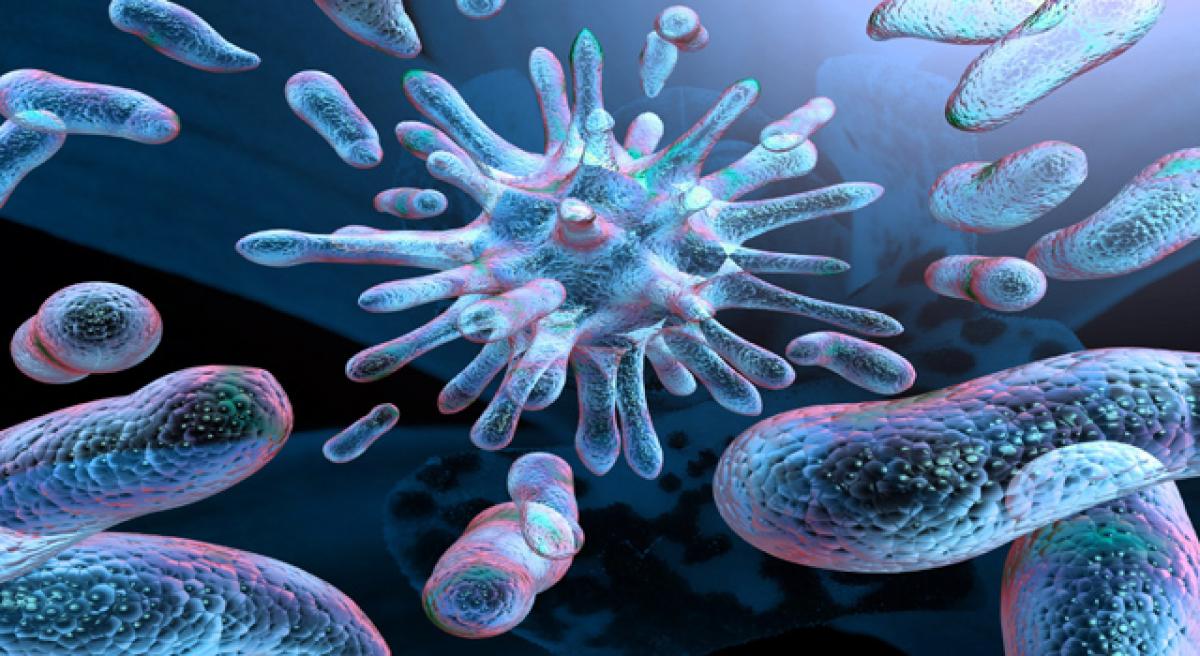Live
- Attack on media: Take action against Mohan Babu, demand journalists
- More sports equipment promised at Central Park
- Mohan Babu’s attack on journalists inhumane act
- West Quay-6 of VPA to get revamped
- Rajaiah demands govt to introduce SC categorisation Bill in Assembly
- Make all arrangements for smooth conduct of Group-2 exams
- CP congratulates chess champs
- Stage set for children’s science exhibition
- ‘Generation Green’ initiative to drive e-waste awareness
- Mysore royal family to get Rs 3,000 crore compensation for Palace Grounds
Just In

Scientists from the Indian Institute of Technology-Kanpur (IIT-K) have built a new sensor that can detect bacterial infection in food and water in just 15-20 minutes, much faster than traditional laboratory tests.
Kanpur: Scientists from the Indian Institute of Technology-Kanpur (IIT-K) have built a new sensor that can detect bacterial infection in food and water in just 15-20 minutes, much faster than traditional laboratory tests.
"Pathogenic bacterial infection is one of the biggest causes of death, and a fast response time is much needed for timely detection and subsequent cure of bacterial infection," said Saurabh Mani Tripathi, a physicist at IIT-K.
The device, developed with collaborators from the Photonics Research Centre at the University of Quebec in Outaouais works over wide temperature range to quickly and cost-effectively identify the potentially deadly Escherichia coli (E. coli) bacteria.
Found in the environment, food, and intestines of people and animals, most strains of E. coli are harmless. But some kinds of E. coli can cause diarrohea, while others cause urinary tract infections, respiratory illness and pneumonia, and other illnesses, according to the US Centres for Disease Control and Prevention.
"Using currently available technologies, which are mostly based on amplification of the sample, it takes several hours to days to detect the presence of bacteria. A fast and accurate detection alternative is, therefore, preferable over the existing technology," Tripathi noted.
Faster tests for the bacteria could lead to faster treatment of patients, as well as to cheaper and easier environmental monitoring, he said.
The new sensor uses bacteriophages -- viruses that can naturally latch onto and kill bacteria. The viruses are bonded to the surface of an optical fibre and will grab E.coli bacteria from a sample and keep them attached.
When a beam of light strikes the surface, the presence of E.coli shifts the wavelength in a telltale sign of bacterial contamination.
One of the challenges of using optical fibres for bacteria detection is that temperature changes can alter the optical properties of the materials.
Sensors are therefore often designed to work at a particular temperature and give inaccurate readings if the sample gets much hotter or colder.
Tripathi and his colleagues overcame this challenge by adding an additional optical component and in effect canceling out temperature-induced shifts.
Their device, in the journal Optics Letters, is temperature insensitive over an approximately 20-degree Celsius, starting at room temperature and going up to 40-degrees Celsius.
The temperature insensitivity makes the sensor more practical for outdoor applications, like on-site monitoring of water reservoirs, Tripathi said.
He also noted that the food industry and pathology labs are other possible users of the new sensors. The researchers said that the sensor can be modified to detect other strains of bacteria by changing the bacteriophage.

© 2024 Hyderabad Media House Limited/The Hans India. All rights reserved. Powered by hocalwire.com







